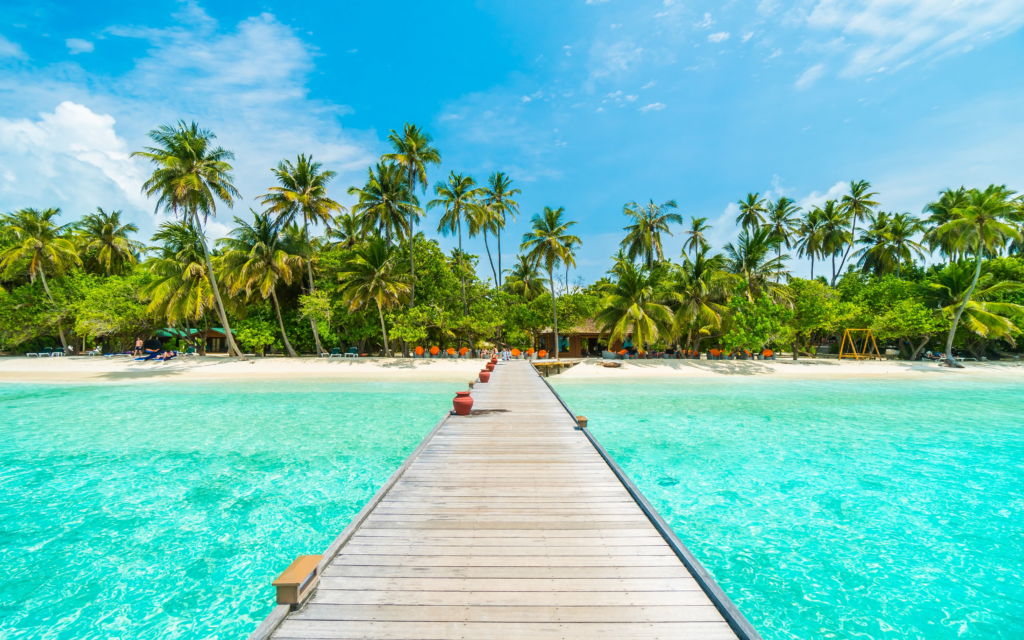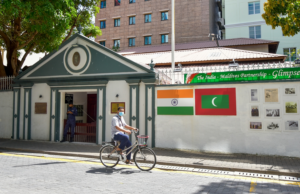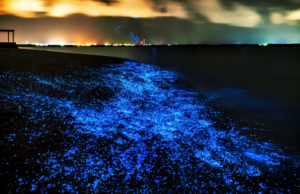Key Takeaways:
- August is the worst month weather-wise, as it falls in the middle of the southwest monsoon season and typically sees the most rainfall, strong winds, and rough seas.
- January through April is peak tourist season, so this is the worst time in terms of high prices and crowds. Flight and accommodation costs are at their highest.
- The wet monsoon season runs from May to November, so there is a higher risk of cloudy days, showers, and possibly tropical storms during these months.
The Maldives, an archipelago of 26 atolls in the Indian Ocean, is renowned for its stunning beaches, crystal-clear waters, and luxurious resorts.
However, the weather in the Maldives can significantly impact your travel experience.
Understanding the weather patterns is crucial for planning your trip to this tropical paradise.

Overview of the Dry and Wet/Monsoon Seasons
The Maldives experiences two distinct seasons: the dry season and the wet (monsoon) season.
The dry season, also known as the northeast monsoon, runs from December to April. During this period, the weather is characterized by clear skies, low humidity, and minimal rainfall, making it the peak tourist season.
Conversely, the wet season, or southwest monsoon, spans from May to November, bringing increased rainfall, higher humidity, and stronger winds.
The Monsoon Season in the Maldives
1. Months Considered the Wet/Monsoon Season
The monsoon season in the Maldives typically lasts from May to November.
This period is marked by frequent rain showers, thunderstorms, and occasional strong winds.
The southwest monsoon is more intense in the northern atolls, while the southern atolls experience relatively milder conditions.
2. Reasons Why It’s the Worst Time
- Heavy Rains: The monsoon season brings substantial rainfall, with September being the wettest month, averaging 243mm of rain.
- Strong Winds: Winds can reach speeds of up to 25-35 mph, particularly during thunderstorms, making outdoor activities challenging.
- Risk of Storms: Although cyclones are rare, the Maldives can experience severe weather conditions, including thunderstorms and rough seas.
3. Average Rainfall and Weather Conditions
During the monsoon season, the Maldives experiences high humidity and frequent rain showers.
The average temperature remains warm, ranging from 26°C to 30°C, but the increased rainfall and cloud cover can make the weather feel oppressive.
Impacts on Travel and Activities
1. Disruptions to Water Sports, Snorkeling, Diving
The rough seas and strong winds during the monsoon season can disrupt water sports, snorkeling, and diving activities.
Visibility underwater may be reduced, and the choppy waters can make these activities unsafe.
2. Potential Flight/Transfer Delays or Cancellations
The unpredictable weather can lead to flight delays or cancellations, particularly for seaplane transfers to remote resorts.
It’s essential to have flexible travel plans and consider travel insurance to cover any disruptions.
3. Outdoor Activities and Beach Time Affected by Rain
Frequent rain showers can limit outdoor activities and beach time.
While the rain is often short-lived, it can still disrupt your plans and make it challenging to enjoy the beautiful beaches and outdoor amenities.
4. Risks of Flooding in Some Islands
Certain islands in the Maldives are prone to flooding during heavy rains, which can affect resort operations and accessibility.
It’s crucial to stay informed about weather conditions and choose resorts with good drainage systems.
Advantages of Visiting During Monsoon Season
1. Fewer Crowds and Lower Prices
One of the main advantages of visiting the Maldives during the monsoon season is the reduced number of tourists.
This means you can enjoy a more peaceful and secluded experience. Additionally, many resorts offer significant discounts during this period, making it a more budget-friendly option.
2. Some Resorts Offer Monsoon Discounts
To attract visitors during the off-peak season, many resorts provide special monsoon packages and discounts.
These can include complimentary spa treatments, dining credits, and other perks, making it an attractive option for budget-conscious travelers.
3. Chance to Experience Lush Green Islands
The increased rainfall during the monsoon season transforms the islands into lush, green paradises.
The vibrant foliage and blooming flowers create a picturesque and serene environment, perfect for nature lovers.
4. Thrill of Experiencing Tropical Storms
For some travelers, the thrill of experiencing tropical storms can be an exciting aspect of visiting the Maldives during the monsoon season.
The dramatic weather can add a unique and memorable element to your trip.
Month-by-Month Breakdown
1. May
- Weather: Beginning of the monsoon season with increasing rainfall and humidity.
- Average Rainfall: 202mm
- Temperature: 30°C (high), 26°C (low)
- Conditions: Cloudier and windier, but still warm.
2. June
- Weather: Continued rainfall with slightly cooler temperatures.
- Average Rainfall: 172mm
- Temperature: 29°C (high), 26°C (low)
- Conditions: Frequent showers, but some sunny periods.
3. July
- Weather: Similar to June with the lowest precipitation during the monsoon season.
- Average Rainfall: 147mm
- Temperature: 29°C (high), 26°C (low)
- Conditions: Less rain, but still humid and warm.
4. August
- Weather: Rainfall picks up again with consistent temperatures.
- Average Rainfall: 188mm
- Temperature: 29°C (high), 26°C (low)
- Conditions: Frequent rain showers, high humidity.
5. September
- Weather: Peak of the monsoon season with the highest rainfall.
- Average Rainfall: 243mm
- Temperature: 29°C (high), 25°C (low)
- Conditions: Heavy rains, thunderstorms, and high humidity.
6. October
- Weather: Gradual decrease in rainfall as the monsoon season ends.
- Average Rainfall: 226mm
- Temperature: 29°C (high), 25°C (low)
- Conditions: Still rainy, but with increasing sunny periods.
7. November
- Weather: End of the monsoon season with decreasing rainfall.
- Average Rainfall: 196mm
- Temperature: 29°C (high), 25°C (low)
- Conditions: Transition to the dry season, more sunny days.
What to Expect if You Visit During the Monsoon
1. Be Prepared for Sudden Rain Showers
Rain showers during the monsoon season can be sudden and intense but are often short-lived.
It’s essential to be prepared with appropriate rain gear and have indoor activities planned.
2. Have Indoor Activities Planned
Given the likelihood of rain, it’s wise to plan for indoor activities such as spa treatments, cooking classes, or cultural experiences offered by your resort.
3. Potential for Service Disruptions at Resorts
Heavy rains and storms can lead to service disruptions at resorts, including power outages or limited access to certain amenities.
It’s important to choose a resort with good infrastructure and contingency plans.
4. Need for Flexibility in Your Plans
Flexibility is key when visiting the Maldives during the monsoon season.
Be prepared for changes in your itinerary and have backup plans for activities and excursions.
Best Months for Good Weather
1. Highlight the Peak Dry Season Months (December-April)
The best time to visit the Maldives for ideal weather conditions is during the dry season from December to April.
During these months, you can expect clear skies, low humidity, and minimal rainfall, making it perfect for beach activities and water sports.
2. Why These Months Offer the Best Conditions
- Clear Skies: Consistently sunny weather with minimal cloud cover.
- Low Humidity: Comfortable temperatures and low humidity levels.
- Minimal Rainfall: Very little rain, ensuring uninterrupted outdoor activities.
- Calm Seas: Ideal conditions for snorkeling, diving, and other water sports.
Tips for Visiting During the Monsoon Season
1. Look for Resort Credits/Discounts
Many resorts offer special deals and discounts during the monsoon season.
Look for packages that include resort credits, complimentary meals, or spa treatments to make the most of your stay.
2. Consider Travel Insurance
Travel insurance is essential when visiting the Maldives during the monsoon season.
It can cover unexpected delays, cancellations, and other disruptions caused by the weather.
3. Pack Appropriate Rain Gear
Ensure you pack lightweight, waterproof clothing, umbrellas, and raincoats to stay dry during sudden showers.
Also, bring waterproof bags for your electronics and other valuables.
4. Have a Positive, Flexible Attitude
Embrace the unpredictability of the monsoon season with a positive and flexible attitude. Enjoy the unique experiences that come with the rainy season, such as lush landscapes and fewer crowds.
By understanding the weather patterns and preparing accordingly, you can still have a memorable and enjoyable trip to the Maldives, even during the monsoon season.
Conclusion
Visiting the Maldives during the monsoon season, which typically spans from May to November, presents both challenges and unique opportunities.
While the heavy rains, strong winds, and risk of storms can disrupt travel plans and outdoor activities, there are several advantages to consider.
The monsoon season offers fewer crowds, lower prices, and the chance to experience the lush, green landscapes of the islands.
Additionally, some travelers may find the tropical storms thrilling and enjoy the quieter, more intimate atmosphere.



